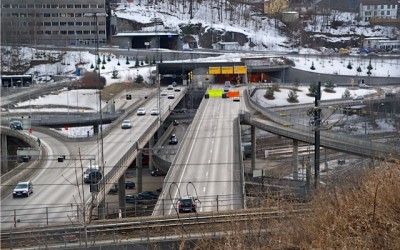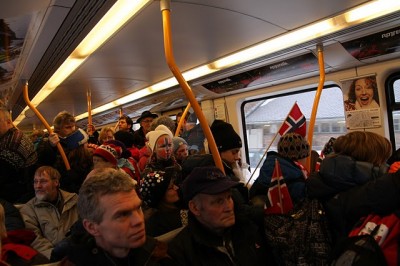Tens of thousands of Oslo-area train passengers once again had to spend hours trying to get to their destinations on Wednesday. A new report suggests far more transport chaos lies ahead, as Norwegian officials fail to meet ever-rising demand for both better roads and public transit systems.

Wednesday’s serious delays for commuters and other train passengers were blamed on another round of signal problems affecting lines through Oslo’s Central Station (Oslo S) and the busy National Theater station. Some commuters reported that it took them more than four hours to get home Wednesday evening, for trips that should take less than one hour.
“Day after day, weeks, months, years – now the government must allocate the billions needed so that once and for all, this can be fixed,” exclaimed one frustrated commuter, Turid Stubergh from Ellingsrud in Oslo, to newspaper Aftenposten. She and thousands like her were faced with trains that were at a standstill, while railway NSB’s efforts to offer alternative bus or taxi service utterly failed to meet demand. Instructions over loudspeaker systems were also said to be difficult to hear and understand, while those who followed them often found the instructions to prove incorrect.

Stranded at the National Theater station, Stubergh said she was told to take the T-bane (metro) to Oslo S, then go to Track 19 where a bus would be waiting. It wasn’t. Once at Track 19, she was then told to instead take the metro to the Bryn station, where she might be able to get on a train home. “This is just unacceptable,” she said.
No relief in sight
A new report written by think tanks Urbana and Civita for the municipal government association KS, and presented in Thursday’s edition of Aftenposten, suggests that things will only get worse in the future. That’s because current plans for transport improvement will only meet half the demand expected to arise from population growth in the Oslo metropolitan area. The planners, according to the report, vastly underestimate growth and demand.
Even if all the planned public transit improvements in the Oslo region are carried out by 2030, the report predicts commuters will still be jammed into trains and metro lines, and motorists will still sit in regular traffic jams. The report’s authors predict that the average morning commute from Asker, west of the capital, into Oslo will increase from one hour and nine minutes today to one hour and 37 minutes within 20 years.
Urban population in Norway’s nine largest cities is expected to continue growing, by another 30 percent by 2030, according to the KS report. Oslo’s population alone is increasing by around 15,000 persons a year, say city officials. That will require huge improvements in both road and public transit systems, with local governments dependent on getting funding from the state.
‘Time to invest in infrastructure at home’
Jøran Kallmyr, a city politician from the Progress Party in charge of transport issues in Oslo, says the report shows “in all clarity” that Norwegian government officials must “stop investing Norway’s capital (largely its oil revenues) in foreign stocks” and instead start investing more in infrastructure within Norway. His party, Norway’s most conservative, has long advocated more use of money that’s now set aside in the country’s huge so-called Oil Fund to fund future pensions.
“We can’t continue to live with infrastructure that only creates congestion and chaos,” Kallmyr told Aftenposten. “We have to invest at home. When (Prime Minister) Jens Stoltenberg says we’re saving money for future generations, he’s wrong. We are passing on a huge bill to them, huge losses on our infrastructure.”
Stoltenberg’s government has claimed that it has earmarked more money for transport improvements than any other in history. Not only is the money still short of what’s needed, though, but much of it has gone unused because of capacity problems in getting the work done. One local economist recently suggested that Norwegian officials should put major infrastructure projects out to international bid, and change regulations to allow foreign firms to do the job.
Views and News from Norway/Nina Berglund
Click on our Readers Respond feature if you’d like to comment on this story. Reader response

